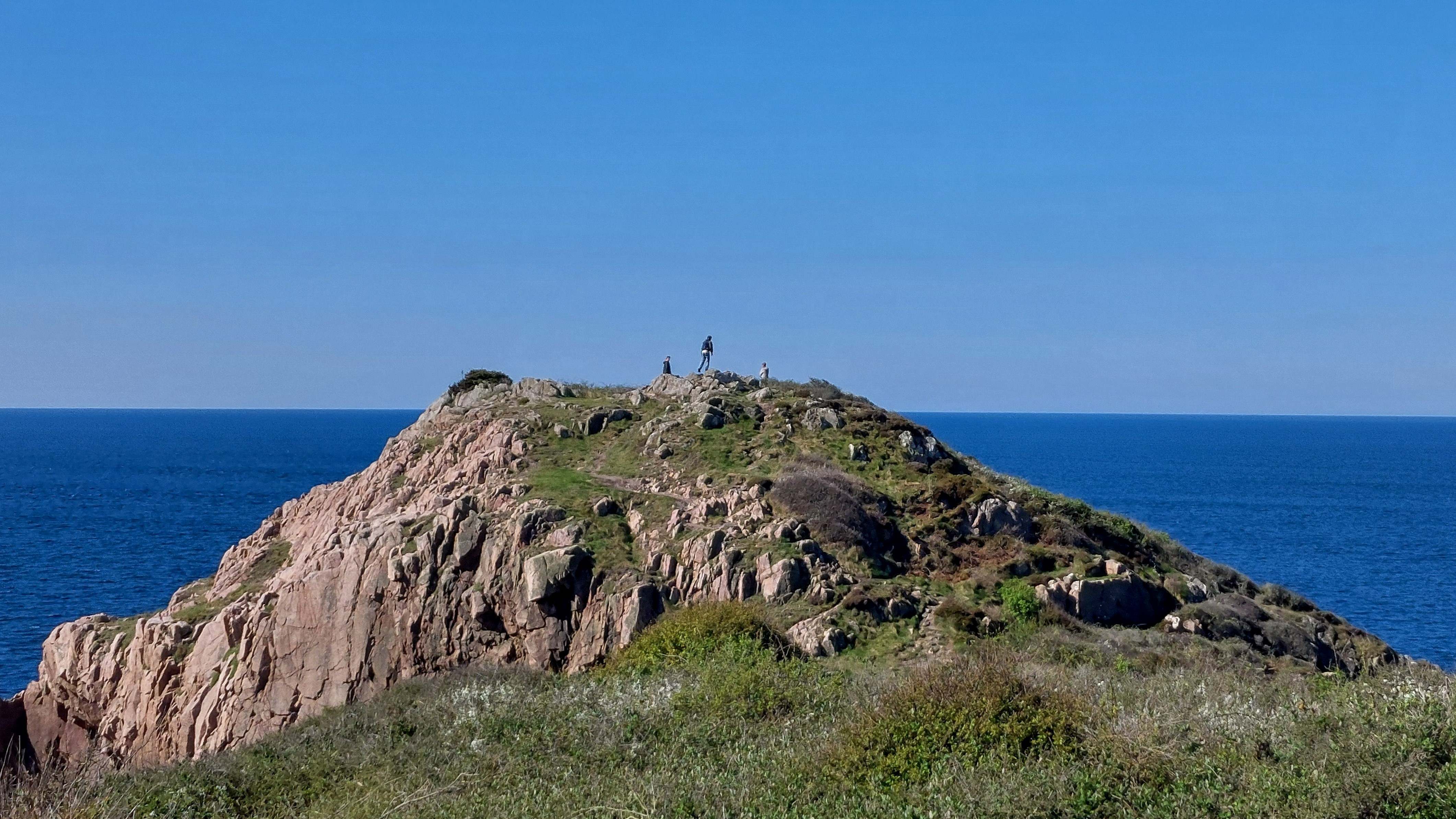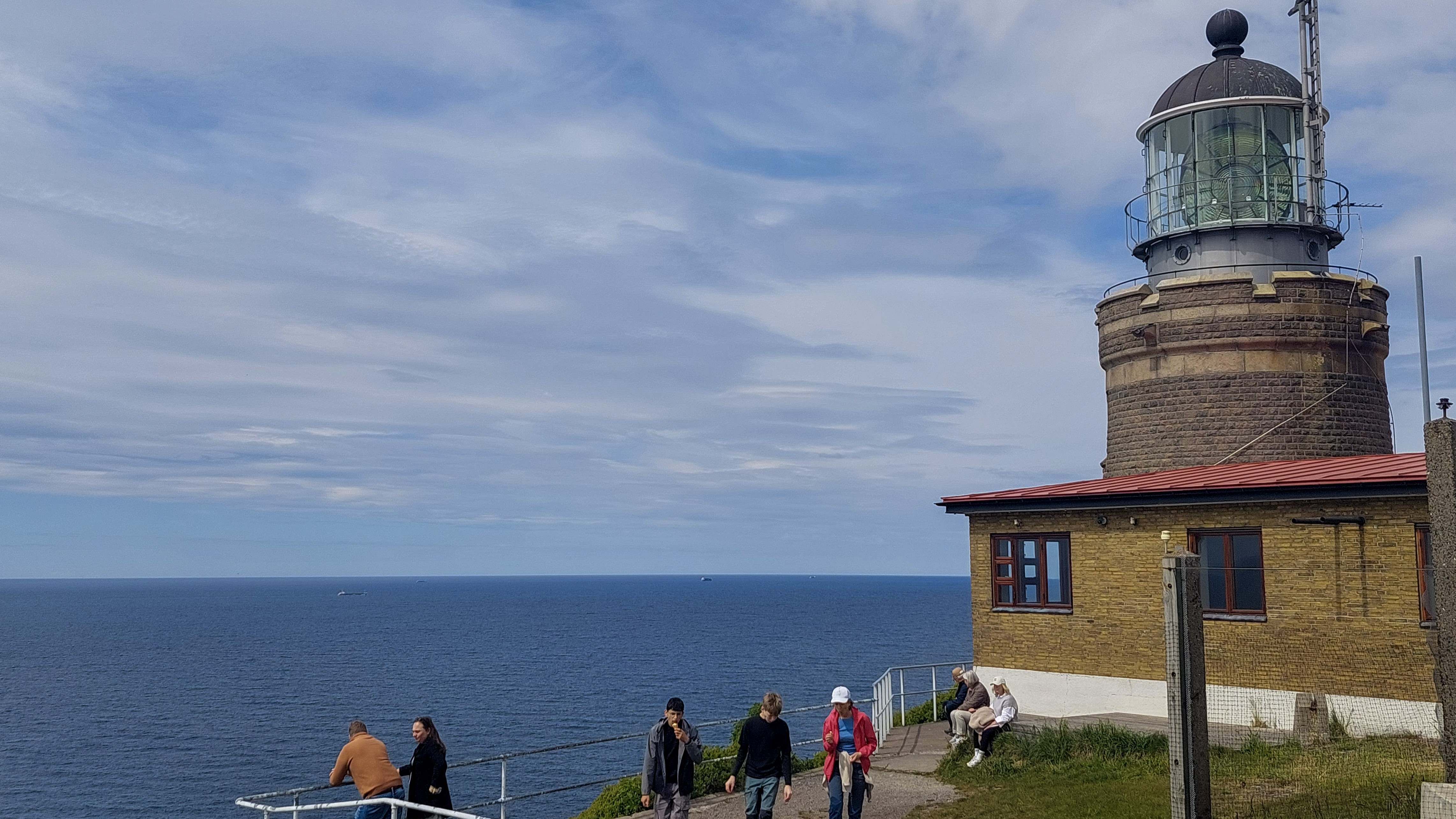Tourism when the destination takes centre stage
Sustainable tourism is about preservation. Regenerative tourism is about improvement and contributing to recovery. Kullaberg Nature Reserve involves the surrounding community to maximise the positive effects of tourism.
The most common way of protecting valuable nature long-term in Sweden, as well as in many other countries, is creating nature reserves, writes the Swedish Environmental Protection Agency.
Sweden has more than 5,000 nature reserves. In Skåne, the country’s southernmost region, there are 387.
One is Kullaberg Nature Reserve in Höganäs municipality, which spans most of the Kulla peninsula in the northwestern part of the region.
“When the visitors leave, they should feel they have participated in something of value. That they have contributed by giving something back and learned something,” says Daniel Åberg, marine biologist and the nature reserve site manager, appointed by the County Administrative Board.

Kullaberg is different from the usual image of Skåne. Wild, and beautiful, with breathtaking cliffs and wide views over the Öresund and Kattegat.
The Nordic Labour Journal meet him at Naturum, the nature reserve’s visitors and information centre.
“During the pandemic, Kullaberg Nature Reserve saw a 60 per cent increase in visitors. The increase has been maintained and is now at 20 per cent above pre-pandemic levels. This means the nature reserve had half a million visitors last year,” he says.
Involving local stakeholders and the public
In Sweden, nature reserves are bound by regulations and management plans. At the same time, the Swedish Environmental Protection Agency encourages nature reserves to practice adaptive management.
“In recent years, we’ve focused on regenerative tourism without actually using that term in our action plan. However, we do practice it in real life based on the principle that guides all nature reserves – namely protect, care and show,” says Daniel Åberg.
Regional cooperation around the Baltic Sea
"Sustainable tourism aims to protect and is more concerned with maintaining the status quo. Regenerative tourism seeks to create conditions for life to thrive.
"It is a system-based approach rather than a checklist. The core idea is that it should have a positive impact on all involved," Fredrik Albihn tells the Nordic Labour Journal when asked what regenerative tourism is all about.
Fredrik is an expert in regenerative tourism and sustainability at the regional destination company Visit Skåne. He is the Swedish representative in a three-year-long Interreg project for regions surrounding the Baltic Sea called ReTour.
Together with representatives from Denmark, Lithuania, Poland and Germany, the project will explore the opportunities and new methods for regenerative tourism. The aim is to create products that strengthen the ties between society and visitors, focusing on ecological, societal and economic values.
Cooperating with locals
Kullaberg Nature Reserve involves associations and local players in decision-making processes.
“This groundwork ensures that decisions are made in line with the wishes of those who are directly affected, and this strengthens both the legitimacy and effectiveness of the management."
The nature reserve’s action plan is reviewed annually in the municipality’s main hall at the town hall.
“We follow up on the points in the plan and their status and challenges. All stakeholders are welcome – not just the ones who are in some way involved with the nature reserve.
“Everyone who attends gives something back by contributing their time to the meeting and by talking about what is important to the reserve and what can be improved,” says Daniel Åberg.
Among the stakeholders are nine companies involved in nature tourism. Nature tourism is usually defined as consumption in the form of activities, accommodation, meals and other tourism services where the nature experience is the central focus.
“The companies can become certified by reading up on Kullaberg and then taking a test. If they pass, they get a diploma with a small logo that proves they are partners of Naturum at Kullaberg. We call them our ambassadors,” says the site manager.
Traffic problems in the spotlight
The Kullen lighthouse is at the point of the Kullaberg peninsula. Next to it is Naturum, a shop and a restaurant.
To get to this part of the reserve, motorised vehicles must pass Mölle, an old fishing village, where houses lie very close to the very narrow and winding road, with no hard shoulder and hardly any pavements at all.

Kullen lighthouse was built in 1900 and is Scandinavia's most powerful.
A few hundred metres from the Kullen lighthouse is a larger car park. It is free of charge because the Swedish Environmental Protection Agency has a policy that discourages parking fees in protected areas.
“Meanwhile, it costs us money to manage the parking. If we could charge 40 kronor, we would have enough not only to manage it but for a shuttle bus or an electric ‘puff-puff’ train to take visitors from Mölle up to the reserve,” says Daniel Åberg.
The regional public transport company Skånetrafiken runs a bus service from Mölle to Kullen lighthouse during the summer months.
There is another car park right next to Mölle chapel, below the reserve. This car park opened in 2019 and also has toilet facilities and an Info Point. From here, it is possible to directly access the extensive and well-signposted network of walking paths crisscrossing the entire nature reserve.
“If more people chose to park there to walk into the reserve, there would be less traffic. We are now trying to market this opportunity together with the municipality,” says Daniel Åberg.
Help from various groups of people
The nature reserve has other challenges besides the traffic. The point where the brackish water from Öresund meets salt water from the Kattegat makes Kullaberg particularly exposed to the forces of nature.
“A violent storm in 1981 brought down nearly the entire large population of black pine here in the reserve. We’ve now replaced it with new plantings of noble deciduous trees such as beech, rowan and oak,” says Daniel Åberg.
Visitors, association members and reserve volunteers helped with the tree planting, and are also involved when new bird boxes are being installed.

Helén Thorn Jönsson is a nature advisor, guide and nature/cultural pedagogue at Naturum Kullaberg.
Municipal assistance
Different forms of support from Höganäs municipality are crucial for the preservation and development of the nature reserve.
This includes the 16 youths who spend their summers working at the reserve, paid by Höganäs municipality.
“The youths answer visitors’ questions, gather firewood for the barbecue sites, tidy, pick rubbish and also tell drivers where they can park their cars. They do a lot for both visitors and the reserve."
To get a summer job at Kullaberg, the youths must either have finished elementary school or year one or two of upper secondary school.
“The reserve and the municipality have what I would call a unique collaboration. They help us look after our areas and help with costs like paying for the supervision of these youths.”
The first in Sweden
The active work undertaken to maximise the positive effects of tourism has resulted in Kullaberg Nature Reserve being awarded Sweden’s first Europarc certification.
The certification is “for natural areas promoted and developed by the Europarc Federation, guaranteeing commitment and cooperation with authorities, local businesses, and representatives from the tourism industry to promote environmental protection and sustainable tourism.”
The certification is based on five principles:
- Promote the conservation and protection of natural values in the national park and nearby nature reserves.
- Raise public awareness and provide knowledge about nature and cultural heritage.
- Implement measures to reduce negative impacts on the environment, landscape, and cultural heritage in the area.
- Create accessible and safe conditions for visitors.
- Contribute to improved public health and quality of life.
The certification lasts for five years. Kullaberg got its first one in 2017.
After developing its action plan, the nature reserve qualified for a new certification in 2022.
“When the action plan is completed, Europarc investigators will come and control the implementation. They will not only look at the budget, they will also meet the stakeholders who have signed the action plan. They have a network full of useful resources as well,” says Daniel Åberg. Another Skåne national park, Söderåsen, has also qualified for Europarc certification.
- Site manager
-
Daniel Åberg has been the site manager for Kullaberg Nature Reserve since 2005.
- Definitions
-
Sustainable tourism
The World Tourism Organization and the UN Environment Programme define sustainable tourism like this:
“Tourism that takes full account of its current and future economic, social and environmental impacts, addressing the needs of visitors, the industry, the environment and host communities.”
According to the Swedish Agency for Economic and Regional Growth, sustainable tourism is an important part of the Agenda 2030 for Sustainable Development.
Regenerative tourism
The term regenerative tourism turns the traditional approach on its head. The main focus is on the destination itself, and visitors are expected to contribute to it.
Skåne’s regional destination company Visit Skåne AB uses this definition:
”Regenerative tourism is a sustainability-focused form of tourism that goes beyond merely minimising negative impacts. Instead, it focuses on improving and restoring the natural, cultural, and social environments affected by tourism. The concept is based on the principle that tourism can positively contribute to the destinations visited, creating a net benefit for both the environment and the community.”
 Follow us on Facebook
Follow us on Facebook
